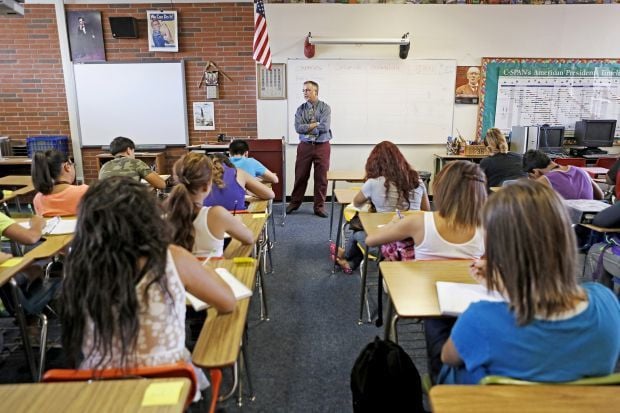The Amphitheater School District will evaluate whether its high schools’ teachers and students are spending more time in their classrooms than their peers in other districts.
The district has formed an advisory committee to conduct a study on high school instructional scheduling after a Canyon del Oro High School parent approached district employees and Governing Board members with concerns about possible negative impacts of longer hours in the classroom.
Independent research done by that parent, Tina Mehren, showed that Amphi’s high schools had about 300 more hours per year in instructional time than their peers, thus making each school day a little longer.
“This is a long day for students,” she said. “But it’s also a big deal if faculty aren’t aware.”
Amphitheater administrators disputed that the high schools’ hours are exceptionally long, noting that Mehren’s calculations factor in time between classes, whereas the numbers for other districts’ high schools did not.
There are some variances in different schools’ instructional hours, “due to the individual specifics of each high school’s bell schedule, and such other factors as the frequency and duration of their early release periods and their passing time between classes,” Associate Superintendent Todd Jaeger wrote in a memo.
An Arizona Daily Star review of high school bell schedules showed that CDO students spent an average of about 7.4 hours a day in class, Amphi High students, six hours and Ironwood Ridge students just more than seven hours.
However, not all students — in Amphi or at other Tucson-area districts — are required to take what’s called “zero hour” classes that typically start at 7 a.m.
Excluding time allotted for those periods, the averages went down, but findings showed that Amphitheater’s high school students were spending slightly more time in the classroom than Catalina Foothills and University high schools, which were two peer schools Mehren used as examples in her research.
Students at Catalina Foothills spend just shy of seven hours each day on average in the classroom, and University High, six hours.
The extra time spent by Amphi’s high schools has no apparent correlation to higher academic success, as evidenced by those schools’ instructional time, Mehren said.
“Students aren’t scoring so much higher than other districts because they have longer classes,” the CDO parent said. She believes the extra time is a burden for both students and teachers.
The state requires 900 hours of instruction per year for high school students and 180 calendar days. If spread out equally, that would amount to about five hours a day of instructional time.
Several district employees said Amphitheater adjusted the high schools’ schedules about three years ago when it was found to have been noncompliant to those state standards.
The penalty for not meeting the minimum requirement would be a decrease in funding, as students would no longer be considered full time.
Longer instructional hours, if used correctly, could lead to a “richer and more robust educational experience” for students, said David Farbman, senior researcher for the National Center on Time and Learning, which advocates for expanded time in schools.
Expanded time, in best practice, allows for more collaboration and project-based learning, he said.
Farbman reviewed the bell schedules of the district’s three high schools and said their hours appeared to be longer than the nationwide norm of 6.8 hours of instruction a day. But he could not comment on whether that time was being well-spent, as he had not reviewed that.
He said there is no single figure identified as an ideal amount of time students and teachers should spend in classrooms.
“The ideal is not a quantity,” he said. “The ideal comes in making sure in the schedule that we develop and in the education program that you put in place, you are serving all kids adequately.”
A longer schedule shouldn’t be in place without significant consideration going into it, he said. If it’s not designed in a way that serves students well, “then there is value in reflecting on that and making changes.”
Jon Lansa, principal of Amphitheater High School, said at his school, instructional time has not been an issue. Schools are given parameters, but also allowed autonomy in creating their own schedules. What Amphi High has set for itself works, he added.
“It really hasn’t even come up among our teachers,” he said.
However, if the study reveals that changes must be made, then the school will do so, he said.
The concerned parent’s research grabbed the attention of the Amphitheater Education Association.
“I think the data is very compelling,” said Mike Robinette, vice president and advocacy chair of the association.
The association conducted a survey of teachers and “an overwhelming majority of teachers wanted the issue studied,” he said.
The advisory committee, of which Mehren is a part, will look into the numerous pieces that go into scheduling instruction, including transportation, food services and compliance with state law. It was directed by the Governing Board to produce a report by November.





